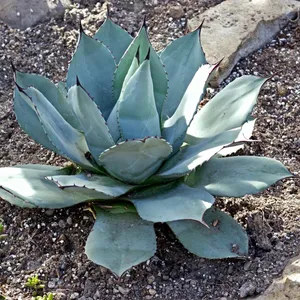Whale's Tongue Agave poses a mild toxicity risk to humans, cats, and dogs. Toxicity occurs through skin contact or ingestion, affecting the entire plant. Symptoms include skin irritation, gastrointestinal discomfort (nausea, vomiting, diarrhea), and general distress. Immediate medical attention is crucial for suspected poisoning. Special caution is advised for children and pets who may unknowingly interact with the plant. Whale's Tongue Agave is toxic to dogs, cats, and people through consumption or contact, affecting the whole plant. Cats and dogs may exhibit distress. Seek veterinary care if poisoning is suspected.

















